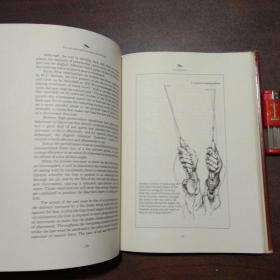Introduction: Fly fishing, an ancient yet captivating sport, has captivated anglers worldwide for centuries. To excel in this skillful art, one must not only understand the intricacies of fly selection and casting but also master the art of interpreting the subtle signals of a float. This article aims to unravel the mysteries behind the float, equipping you with the knowledge to become a proficient fly fisherman.
The Basics of Floats: A float, also known as a fly fishing indicator, is a buoyant device attached to the leader of the fly line. It serves as a visual aid, alerting anglers to the presence of fish and their actions beneath the water's surface. Floats come in various shapes, sizes, and materials, each designed to cater to specific fishing conditions.
Choosing the Right Float: Selecting the appropriate float is crucial for successful fly fishing. Here are some factors to consider:
a. Weight: The weight of the float should match the fishing conditions. Lighter floats are ideal for slow-moving water, while heavier floats are better suited for fast currents.
b. Shape: Different shapes, such as the indicator or strike indicator, serve different purposes. The indicator float is primarily used to detect subtle movements, while the strike indicator is designed to indicate a fish's strike.
c. Length: The length of the float should be proportional to the depth of the water and the distance from the fly to the float. Longer floats are better for detecting subtle movements in deeper water, while shorter floats are suitable for shallow waters.
Reading the Float: Understanding how to interpret the float's movements is essential for identifying fish activity and determining the appropriate response. Here are some common float signals and their meanings:
a. Sudden Movement: A sudden, unexplained movement of the float can indicate a fish has taken the fly. Gently lift the rod tip to set the hook, ensuring a smooth and gentle presentation.
b. Gradual Rise: If the float rises gradually, it suggests that the fly is being eaten by a fish. Gently set the hook as the float rises, maintaining a steady pressure to prevent spooking the fish.
c. Jerking or Twisting: These movements often indicate that a fish is trying to move the fly away or is attempting to shake off the hook. Maintain pressure and be prepared to set the hook when the float jerks or twists.
d. Subtle Wobbling: A gentle, rhythmic wobble can indicate that the fly is being nibbled at by smaller fish. Gently retrieve the fly to maintain interest and entice the fish to take the fly.
e. No Movement: If the float remains still, it may indicate that the fly is at the correct depth but not triggering any interest. In this case, consider adjusting the fly's position, changing its speed, or even retying the fly.
Fine-Tuning Your Technique: To enhance your float reading skills, here are some additional tips:

a. Practice Patience: Patience is key in fly fishing. Spend time observing the float's movements and learning to differentiate between natural currents and fish activity.
b. Keep the Line Taut: Ensuring the line remains taut will help you detect even the smallest float movements.
c. Maintain a Sensory Connection: Engage all your senses, including touch and hearing, to gain a better understanding of the float's signals.
Conclusion: Decoding the float is an essential skill for any fly fisherman. By selecting the appropriate float, interpreting its movements, and refining your technique, you can become a more successful angler. Remember, fly fishing is not just about catching fish; it's about the journey and the experience. With practice and dedication, you will master the art of float reading and unlock the true potential of fly fishing.












